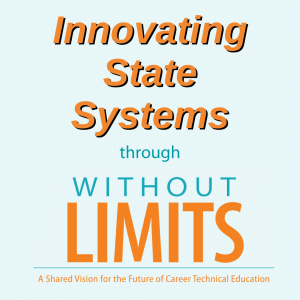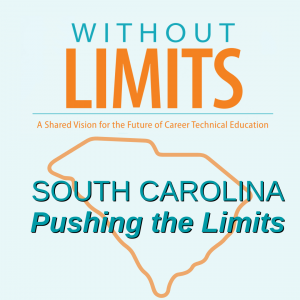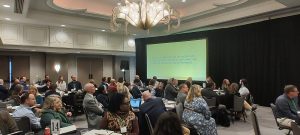Montana is looking at innovative ways to support its career technical education (CTE) early post-secondary opportunities by giving learners earlier access to dual enrollment offerings. This blog features Montana and the use of Perkins funding to expand access to dual enrollment opportunities for all CTE learners.

Using Perkins Reserve Funds to Support Dual Enrollment CTE Programs
In 2018, the Strengthening Career Technical Education for the 21st Century Act (Perkins V) increased state reserve funds from 10 to 15 percent. Reserve funds must be used to foster innovation in Career Technical Education (CTE) and promote program alignment with high-skill, high-wage or in-demand careers. States have flexibility with how they allocate reserve funds and there is opportunity for local and regional areas to develop and expand early postsecondary opportunities (EPSOs) and invest in enhancing secondary to postsecondary transitions to ensure credit transfer or articulation for more learners.
Montana under the Montana Board of Regents, has used reserve funds to drive college acceleration through early postsecondary CTE opportunities in the state and increase secondary to postsecondary articulation agreements. As a result, Montana saw significant increases in dual enrollment participants and their program success rates. According to the Montana Perkins V State Plan, the number of learners taking dual enrollment courses doubled from 2014 to 2018, while the number of dual enrollment learners matriculating into a Montana University System institution tripled.
The state uses a competitive Perkins Reserve grant process to support the Montana Career Pathways (MCP) initiative – to increase awareness of secondary CTE programs and activities, as well as options for postsecondary degrees and credentials that align to the learner’s pathway. Competitive grants are available to tribal colleges, two-year colleges, community colleges and consortia.
Recipients can use Perkins Reserve grant funds to employ full-time dual enrollment coordinators and CTE dual enrollment exploratory activities. The coordinators serve as liaisons between secondary and postsecondary institutions and work closely with learners in helping them identify a pathway related to a career in a program their institution offers. In addition, coordinators serve as liaisons between faculty and staff and create collaborative spaces for secondary and postsecondary faculty by facilitating meetings to discuss articulation agreements and course transfer as well as collaboration with business and industry. Grant funds also allow for recipients to create CTE career exploration activities that connect secondary (middle and high school learners) with postsecondary learners, and staff to local industry partners for hands-on and meaningful CTE experiences.
Since the initial allotment of Perkins Reserve funds (under Montana’s previous state plan) has been hugely successful statewide, the Department has decided to continue the allotment into their updated Perkins V State Plan, strengthening and scaling its offerings while specifically committing to work with tribal colleges and special population learners. As such, the state continues to prioritize funding activities related to career exploration, CTE dual enrollment, and promotion of state-level CTE programs of study such as Montana Career Pathways, industry-recognized credential attainment and work-based learning opportunities.
To learn more about how CTE early postsecondary opportunities such as dual enrollment serve learners, check out Advance CTE’s resource on Intentional Acts of Dual Enrollment: State Strategies for Scaling Early Postsecondary Opportunities in Career Pathways.
For more in-depth information on Montana’s work, please visit the following resources: State of EPSO, Montana Perkins Plan, Montana State Plan
Suela Cela, Senior Policy Associate



 When was College in High School Alliance (CHSA) established and who were its founders? Was there a catalyst for its inception?
When was College in High School Alliance (CHSA) established and who were its founders? Was there a catalyst for its inception? Over the past year, three states – Colorado, Nebraska and South Carolina – leveraged
Over the past year, three states – Colorado, Nebraska and South Carolina – leveraged  Project Focus
Project Focus Project Focus
Project Focus Nebraska
Nebraska It is within this spirit that makes Advance CTE’s participation in the new initiative –
It is within this spirit that makes Advance CTE’s participation in the new initiative –  he partners, funders and state and local teams came together around a shared commitment to quality, equity and innovation – and ready to roll up our sleeves and do the hard work of confronting systemic barriers, particularly those faced by historically marginalized populations, activate the policy and practice levers that will drive scale and sustainability, and generate next-generation solutions to keep our field moving at the pace that our learners and industry demand. Between the Impact and Innovation Cohorts, at the end of the two-years, we will have incredibly strong proof points at the state and local level and new ways of designing pathways systems than we couldn’t have imagined today.
he partners, funders and state and local teams came together around a shared commitment to quality, equity and innovation – and ready to roll up our sleeves and do the hard work of confronting systemic barriers, particularly those faced by historically marginalized populations, activate the policy and practice levers that will drive scale and sustainability, and generate next-generation solutions to keep our field moving at the pace that our learners and industry demand. Between the Impact and Innovation Cohorts, at the end of the two-years, we will have incredibly strong proof points at the state and local level and new ways of designing pathways systems than we couldn’t have imagined today. In March 2021, Advance CTE released
In March 2021, Advance CTE released  Once DSD administration began conversations with educators and staff, they recognized the need to create schoolwide “Without Limits Teams,” comprised of a school administrator, special education staff, school counselors, and the school’s CTE coordinator. Last spring, school staff from each of the 25 DSD schools were each brought together in full day district-wide workshops structured on the five CTE Without Limits principles and designed using Advance CTE’s
Once DSD administration began conversations with educators and staff, they recognized the need to create schoolwide “Without Limits Teams,” comprised of a school administrator, special education staff, school counselors, and the school’s CTE coordinator. Last spring, school staff from each of the 25 DSD schools were each brought together in full day district-wide workshops structured on the five CTE Without Limits principles and designed using Advance CTE’s